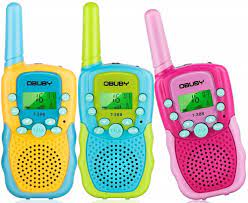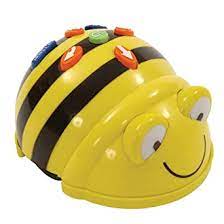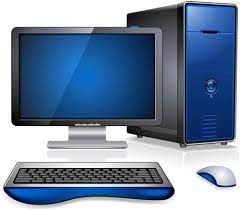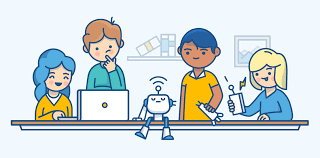Computing
Statement of Intent for computing
At Brightside it is our aim to provide a high-quality computing curriculum which equips our pupils to use computational thinking and creativity to understand and change the world. The curriculum will teach pupils the key knowledge about how computing systems work and how they are designed and programmed (algorithms). Our learners will have the opportunity to gain an understanding of computational systems of all kinds, whether or not they include computers.
We strive to give our pupils the life skills that will enable them to embrace and utilise new technology in a socially responsible and safe way in order to flourish. We want children to become users of computing technologies, gaining confidence and enjoyment from their activities. We aim for the use of technology to support learning across the entire curriculum and to ensure the curriculum is accessible for every child. Not only do we want them to be digitally literate and competent end-users of technology but through our computer science lessons we want them to develop in resilience creativity, problem solving and critical thinking. We aim to provide our pupils with a breadth of experiences, so they develop an understanding of themselves as individuals within their community but also as members of a wider community and as responsible digital citizens. We encourage children to recognise the beneficial impact of computational thinking to improve mental and physical well-being. They leave Brightside with experiences that enable them to use computers safely and to enrich learning.
Implementation for computing
Early Years (EYs-nursery and reception)
It is important in the EYs to give children a broad, play-based experience of ICT in a range of contexts, including outdoor play. Computing is not just about computers. Early years learning environments should feature ICT scenarios based on experience in the real world, such as in role play. Children gain confidence, control and language skills through opportunities to explore using non-computer based resources such as programmable toys, controllable traffic lights and walkie-talkie sets. Recording devices can support children to develop their communication skills. This is particularly useful with children who have English as an additional language.

Key Stage 1
Computer science
Children should acquire and develop the skills associated with computer science in order to:
- Design, write and debug programs that accomplish specific goals, including controlling or simulating physical systems; solve problems by decomposing them into smaller parts.
- Use sequence, selection and repetition in programs and work with variables.
- Use logical reasoning to explain how some algorithms work and detect and correct errors in algorithms and programs.

I.T.
Children should acquire and develop skills associated with Information technology in order to:
- use search technologies effectively.
- select, use and combine a variety of software on a range of digital devices to design and create a range of programs, systems and content that accomplish given goals, including collecting, evaluating and presenting data and information.
- acquire and refine the techniques g. saving, copying, checking the accuracy
- practise mathematical skills g. drawing and interpreting graphs and bar charts in real contexts;
- develop the skills of collecting first hand data, evaluating it, making inferences or predictions and testing them, presenting conclusions, and use all these in their work with ICT.
.jpg&usqp=CAU)

Digital literacy
Children should acquire and develop their skills in digital literacy in order to:
- understand the opportunities networks offer for communication and collaboration.
- be discerning in evaluating and presenting data and information.
- be able to use technology safely ,respectfully and responsibly; recognise acceptable/unacceptable behaviour; identify a range of ways to report concerns about content and contact.
Computing Curriculum Progression Overview
Computing language progression in KS1
EYFS Technology language progression
Key knowledge and skills progression in KS1








